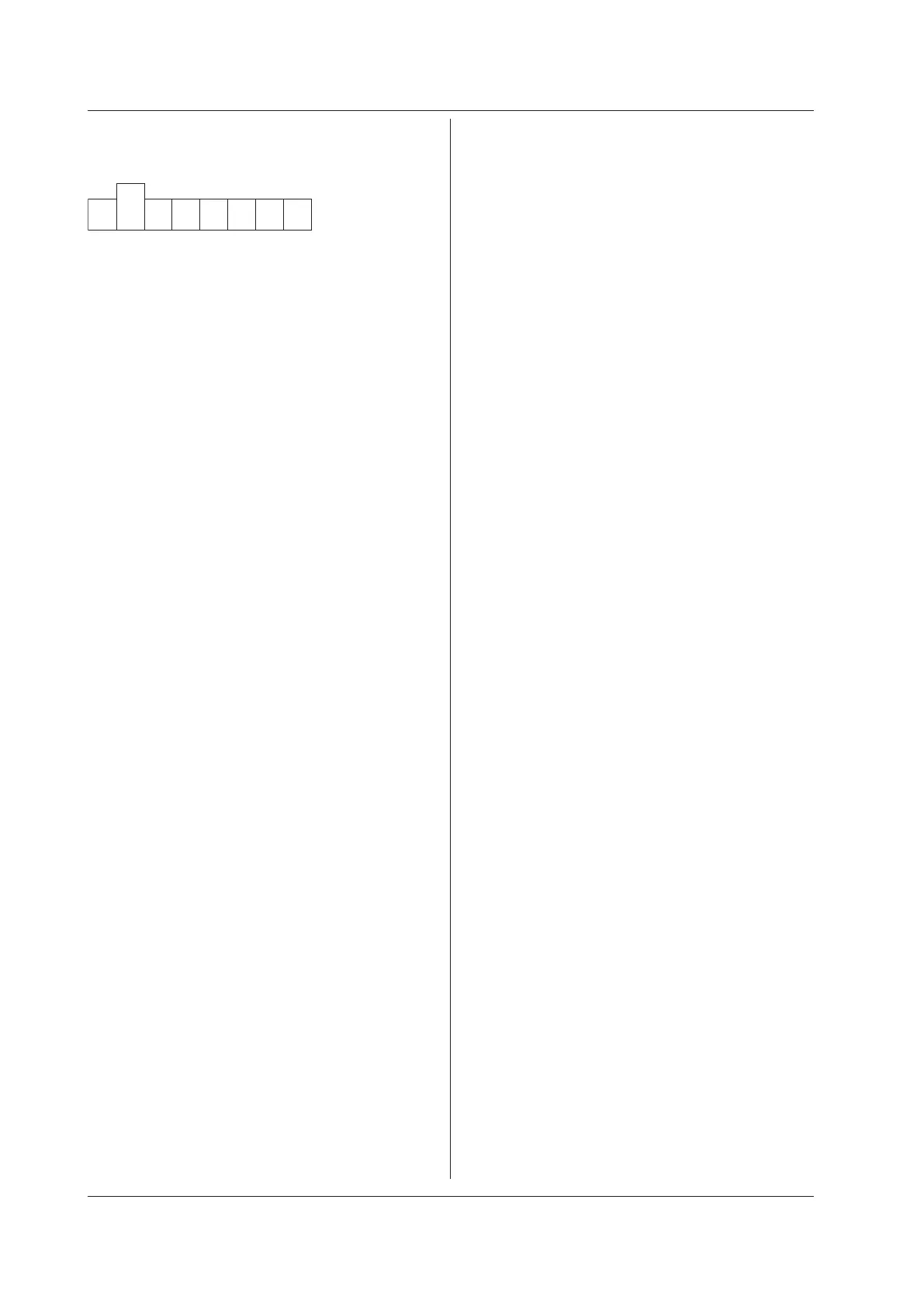13.3 Status Reports
13-28
IM GS210-01EN
13.3.2 Status Byte
Status Byte
7 6 5 4 3 2 1 0
RQS
MSS ESB MAV EAV EES
Bits 0, 3, and 7
Not used (always 0)
Bit 1 EES (Extended Event Summary Bit)
This bit is set to 1 when the logical AND of the
extended event register and the extended event enable
register is 1. For details, see page 13-30.
Bit 2 EAV (Error Available)
This bit is set to 1 when the error queue is not empty.
For details, see page 13-31.
Bit 4 MAV (Message Available)
This bit is set to 1 when the output queue is not empty.
For details, see page 13-31.
Bit 5 ESB (Event Summary Bit)
This bit is set to 1 when the logical AND of the standard
event register and the standard event enable register
is 1. For details, see page 13-29.
Bit 6 RQS (Request Service)/MSS (Master
Status Summary)
This bit is set to 1 when the logical AND of the status
byte excluding bit 6 and the service request enable
register is 1. RQS is set to 1 when the MSS bit
changes from 0 to 1 and is cleared when serial polling
is carried out or when the MSS bit changes to 0.
Bit Masking
To mask a bit in the status byte so that it does not
cause an SRQ, set the corresponding bit of the service
request enable register to 0.
For example, to mask bit 2 (EAV) so that service is not
requested when an error occurs, set bit 2 of the service
request enable register to 0. Do this using the *SRE
command. To query whether each bit of the service
request enable register is 1 or 0, use *SRE?. For
details on the *SRE command, see section 13.2.11.
Status Byte Operation
A service request is issued when bit 6 in the status
byte becomes 1. Bit 6 is set to 1 when any other bit
becomes 1 (when the corresponding bit of the service
request enable register is also set to 1).
For example, if an event occurs and the logical OR
of a standard event register bit and its corresponding
enable register bit is 1, then bit 5 (ESB) is set to 1. At
this point, if bit 5 of the service request enable register
is 1, bit 6 (MSS) is set to 1, and the GS200 requests
service from the controller.
You can check what type of event occurred by reading
the contents of the status byte.
Reading the Status Byte
There are two ways to read the contents of the status
byte.
*STB? Query
Bit 6 functions as MSS when a query is made using
*STB?. This causes the MSS to be read. This query
does not cause any of the status byte bits to be cleared
after the status byte is read.
Serial Polling
Serial polling causes bit 6 to function as an RQS bit.
This causes the RQS to be read. After the status byte
is read, only the RQS bit is cleared. You cannot read
the MSS bit when serial polling is used.
Clearing the Status Byte
There is no way to clear all the bits in the status byte.
The bits that are cleared for each operation are shown
below.
*STB? Query
None of the bits are cleared.
Serial Polling
Only the RQS bit is cleared.
When a *CLS command is received
When a *CLS command is received, the status byte
itself is not cleared, but the contents of the standard
event register, which affects the bits in the status byte,
are cleared. As a result, the corresponding status
byte bits are cleared. Because the output queue is
not cleared with a *CLS command, bit 4 (MAV) in the
status byte is not affected. However, the output queue
will also be cleared if the *CLS command is received
just after a program message terminator.

